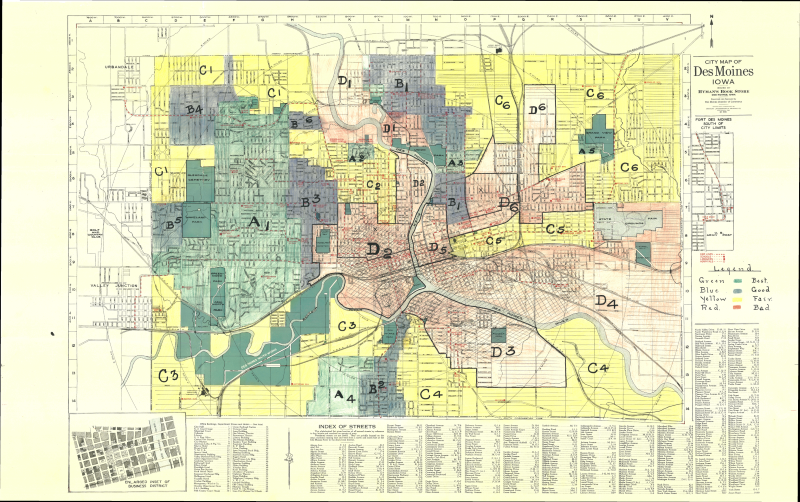
In the maps and table below, 2010 data shows that in many of the areas that are predominately African American, there is, on average, higher rental occupancy compared to ownership. In 2017, 24% of African American residents looking to get a loan to buy a home in Des Moines were denied compared to the average of 11.3% denial rate for all of Polk County (AALFDSM, 2017). In an interview, Mr. Clair Rudison, Jr. noted that the neighborhoods north of Downtown, including Evelyn Davis Park, Cheatom Park, and River Bend, have seen a significant shift in the housing tenure. “Back in the sixties the places looked nicer than they do today because back then majority of blacks that lived over here owned their own properties, today they don’t.” The change in tenure is a good indication of the wealth disparity in a community, and it is evident, based on the data and mapped visuals that the areas with higher amounts of renters are the areas with predominantly more African Americans and minorities.
This research does not explore at length the relationship between rental/owner units and where African Americans are located, but it is research that should be done. Building equity and wealth is an important part of American society and minorities, especially African Americans, have been restricted in their access to those opportunities.
Redlining has not only left a distinct influence as to where African Americans have lived over time, rather it has also significantly impacted the built environment itself. It is apparent today that the areas with higher concentrations of African Americans have not been invested in overtime and will unlikely see lots of positive investment in the future. The housing and streets themselves are more rundown and, while the community does care about their neighborhoods because so much of the housing stock has become rental properties, the maintenance of the exterior is not kept up regularly. In the images below, you can see that the areas of higher risk and minority concentration have become areas of depleted housing stock, decreasing housing values and decreasing neighborhood "health", which can be observed in the photos below.
It is evident from these maps produced by czb LLC in 2018, that there has been little to no investment into the communites that have been predominatly African American and low-income. They recognize that these places are deteriorating, but yet, not much is being done to help those communities prosper. While they talk about the need for these places to change, based on maps such as these, action has not happened and these places continue to endure in poverty and run-down housing .